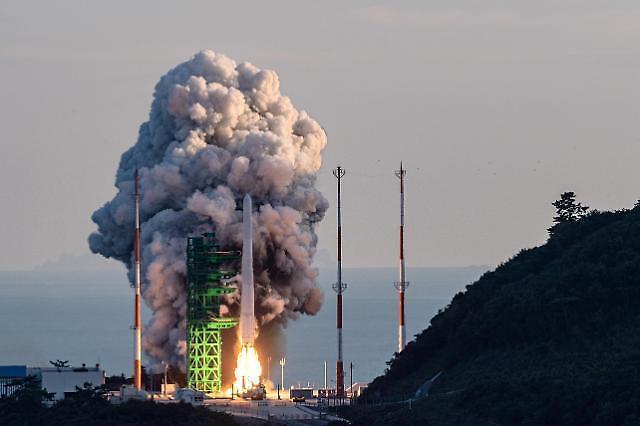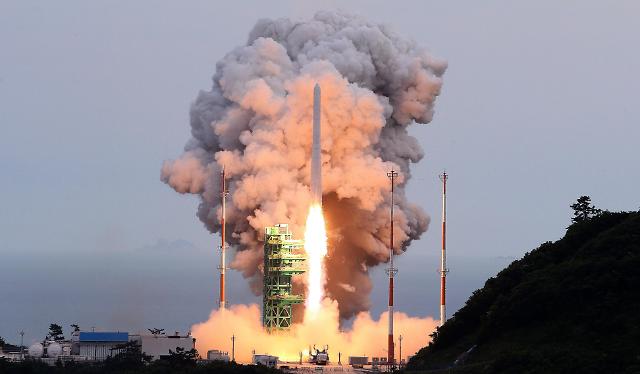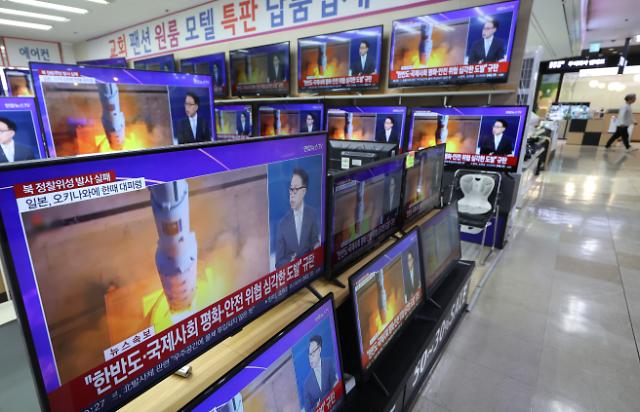
[Yonhap Photo]
An avionics system platform is a combination of software and electronics for aircraft, rockets, drones, and spacecraft. The platform serves as the control tower for communications, flight controls, navigation, and management of multiple systems. It is composed of hundreds of systems to perform unique functions.
South Korea unveiled a 10-year "Space Pioneer" project in 2021 to spend some 211.5 billion won ($167 million) on raising the localization rate of high-tech and core space components for satellites and projectiles to 97 percent or more by 2030. In October 2021, a three-stage homemade rocket known as "Nuri" carrying engines produced by Hanwha Aerospace was launched for the first time to reach the target altitude of 700 kilometers (434 miles) but failed to put a dummy satellite into an orbit.
Hanwha Aerospace was selected together with Hanwha Corporation, the producer of precision-guided munitions, navigational systems for guided weapons and lasers to participate in the Space Pioneer program to develop an "integrated avionics system for low cost, light projectiles." Hanwha Aerospace will join a consortium to develop the new light and affordable avionics system by 2028.
Based on the company's experience in space projects including the development of Nuri, Hanwha Aerospace will participate in the development of small-sized liquid-propellant rockets and next-generation space launch vehicles. Hanwha Corporation will work on the development of solid-propellant rockets. "We will fully collaborate with our consortium partners to successfully develop the integrated avionics system," Hanwha Aerospace CEO Shin Hyun-woo said in a statement on April 28.
Copyright ⓒ Aju Press All rights reserved.





View more comments